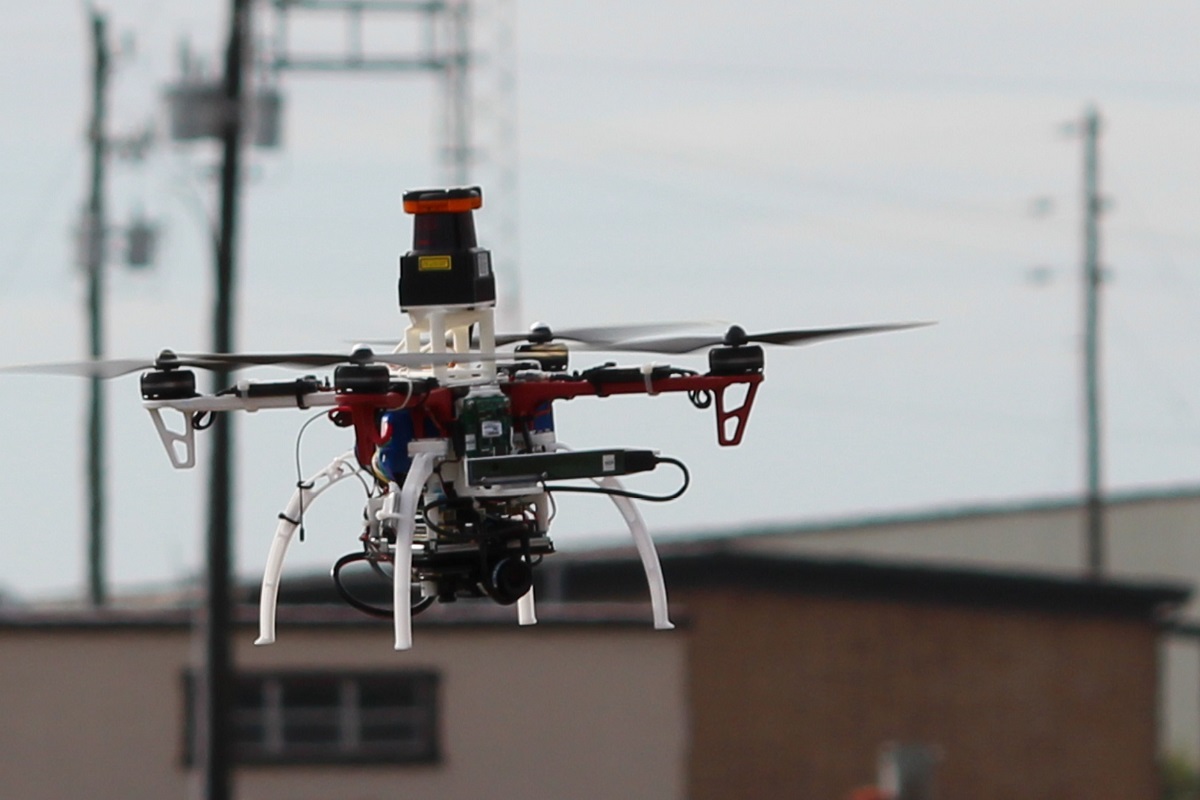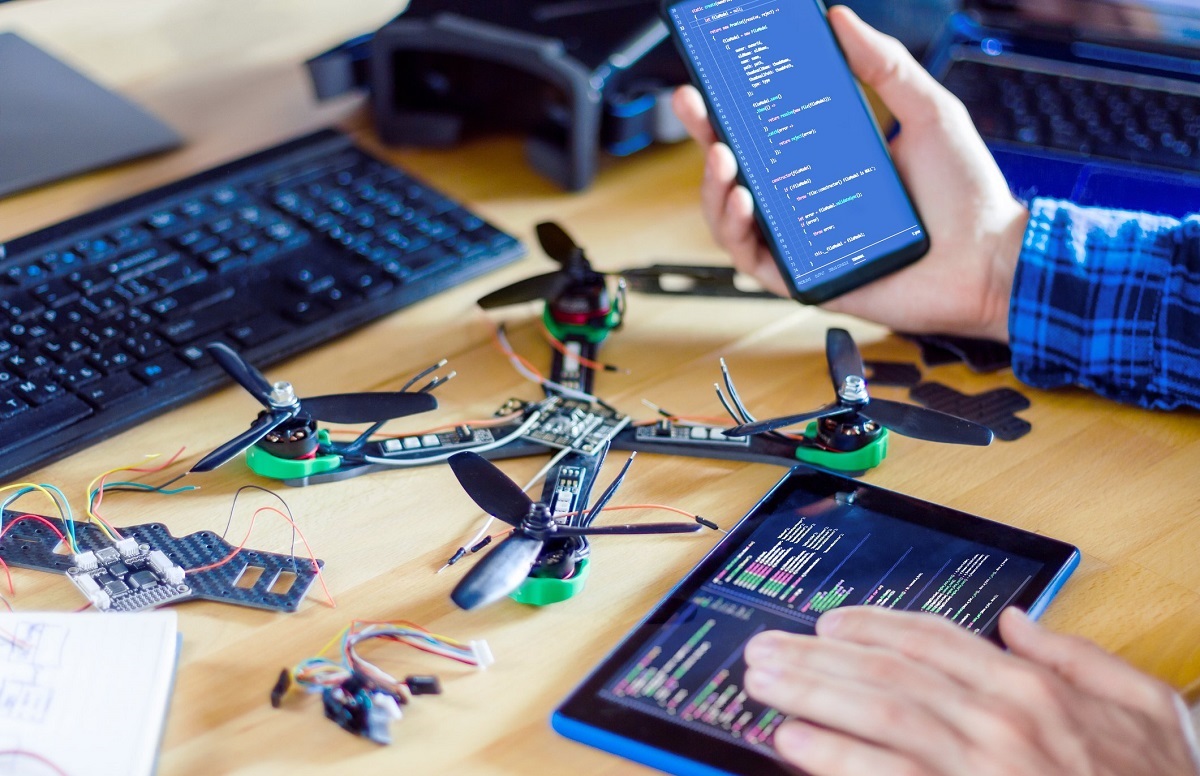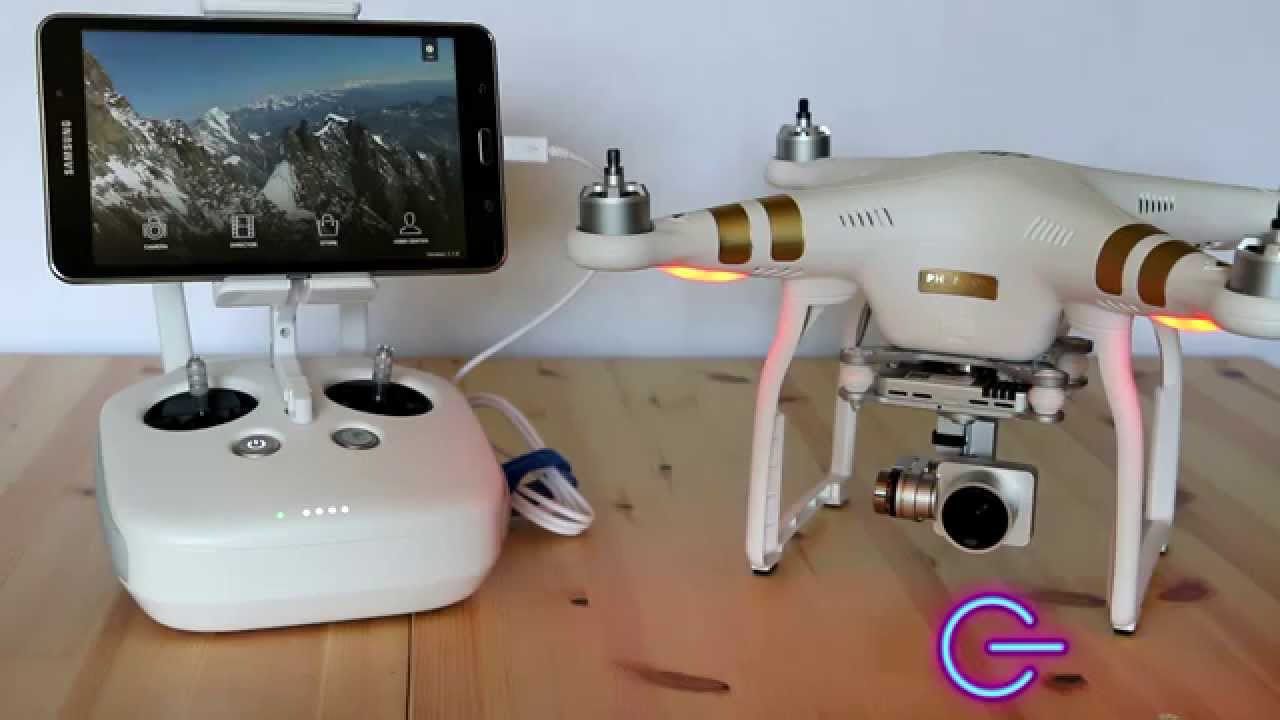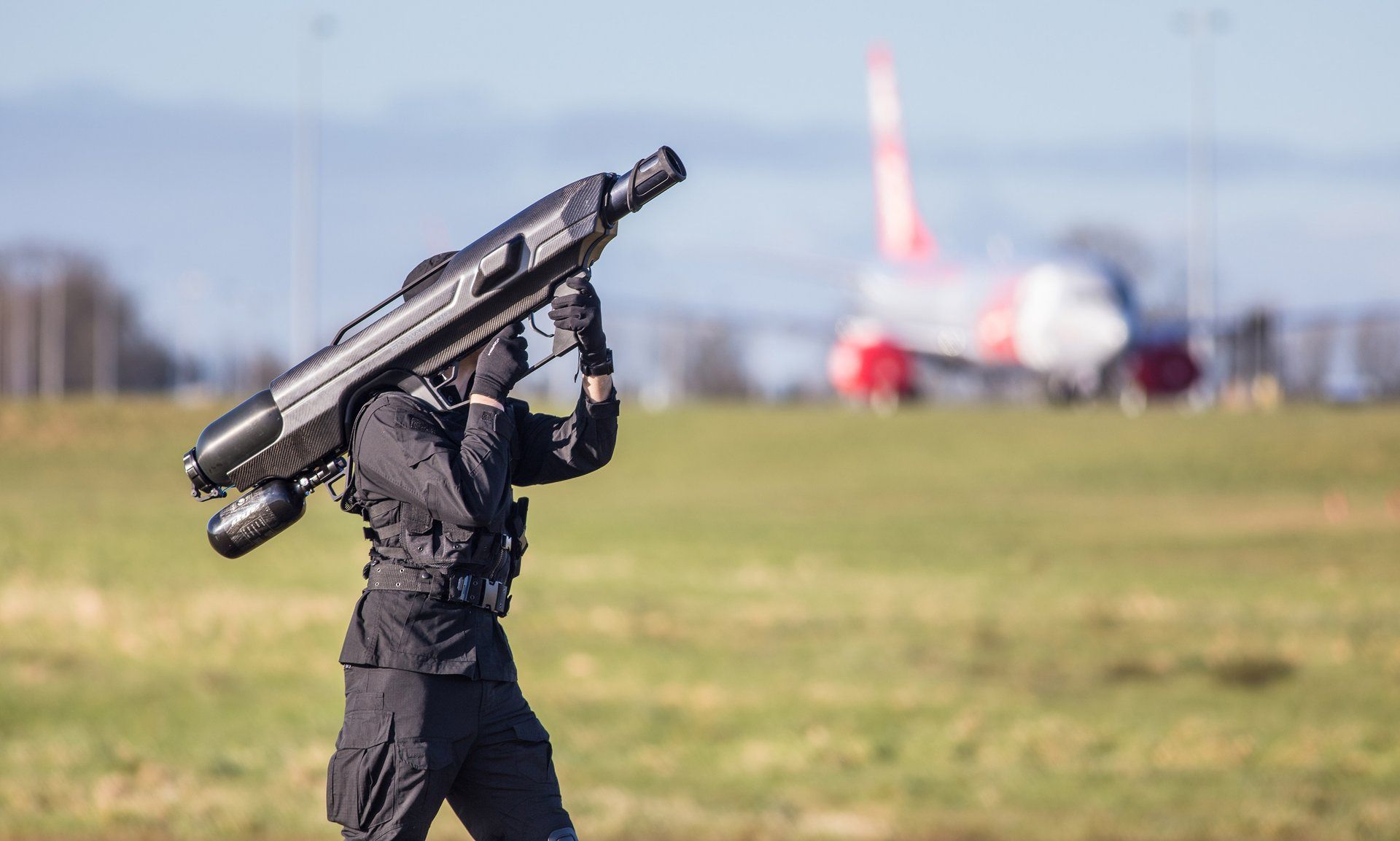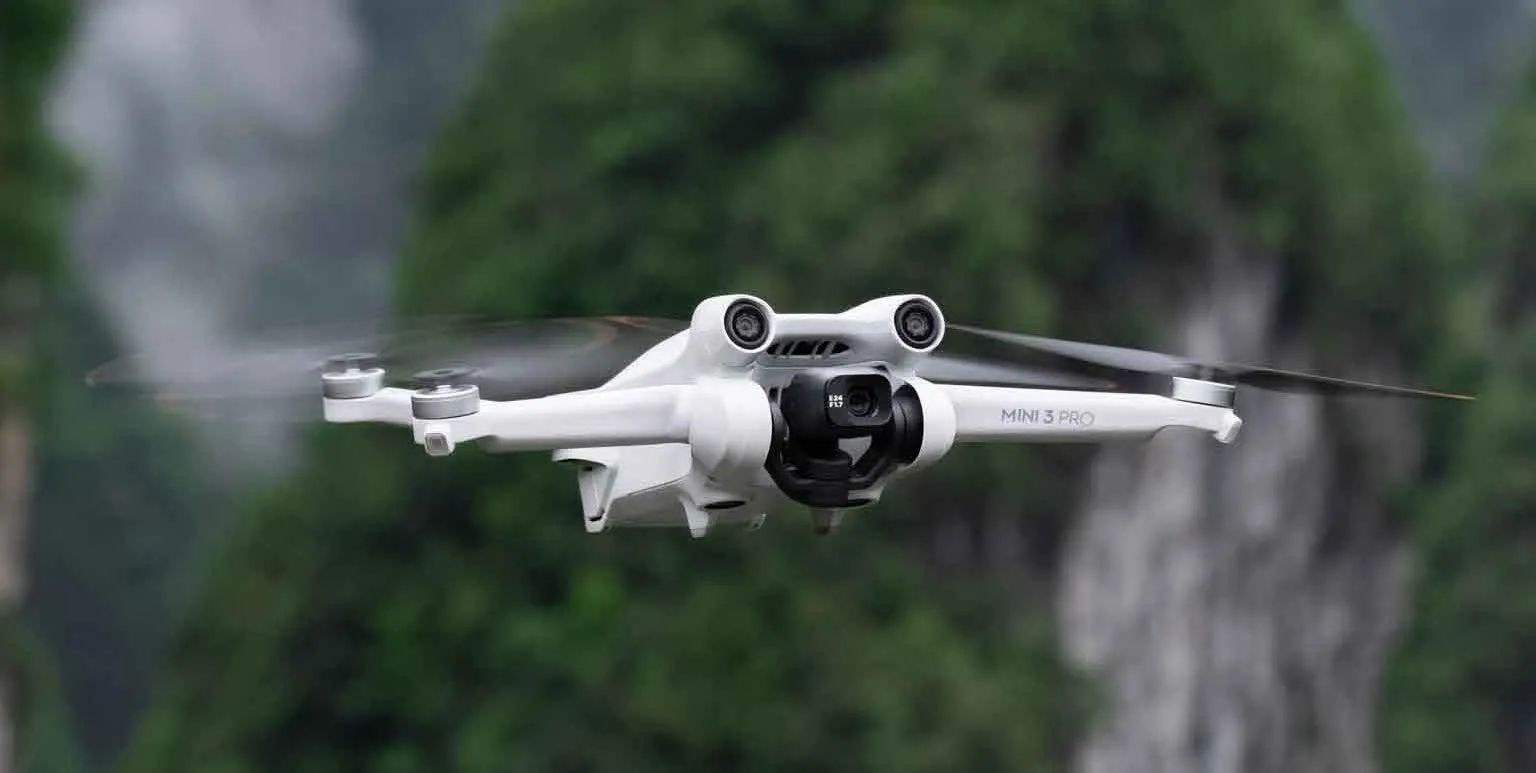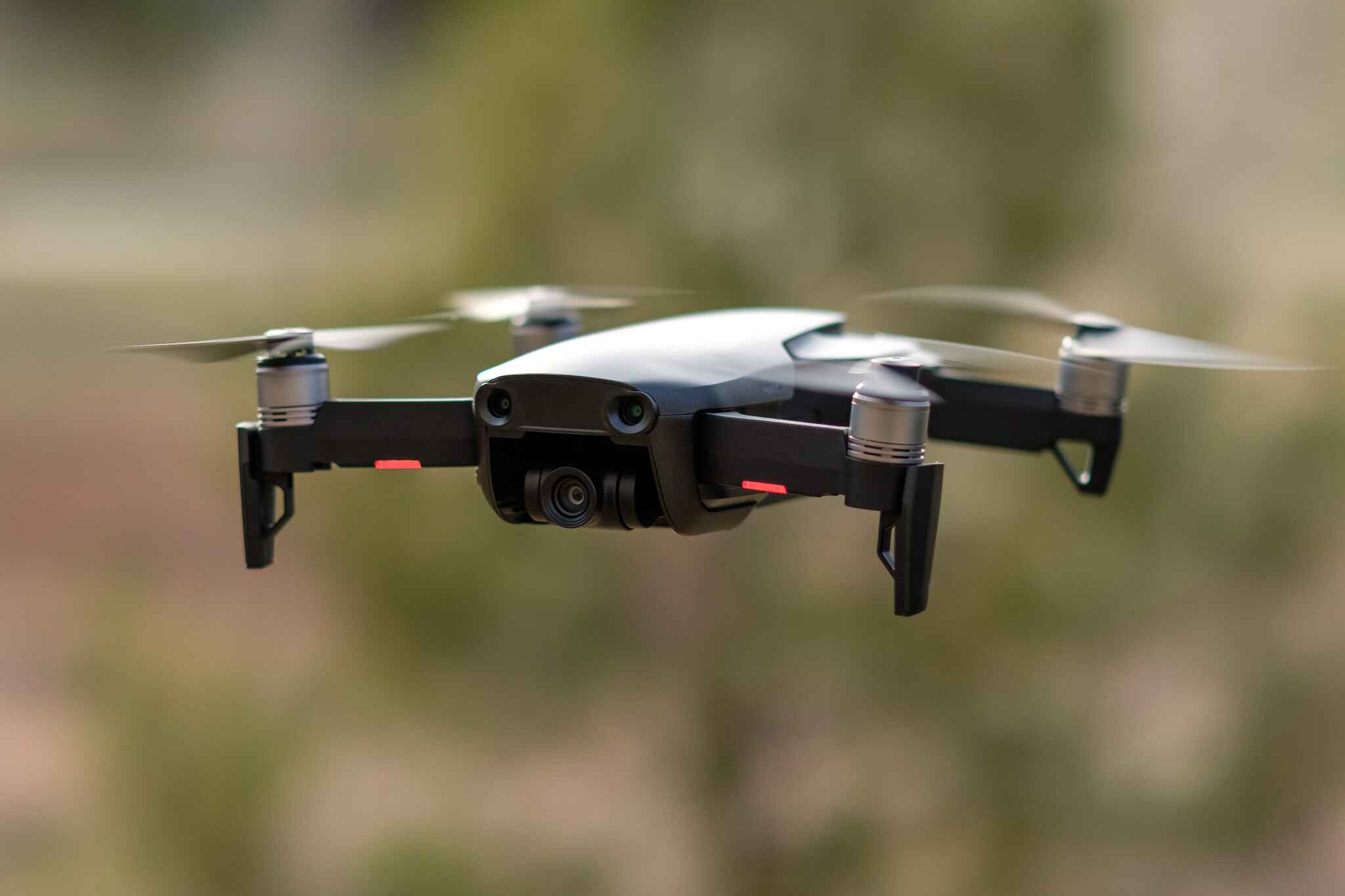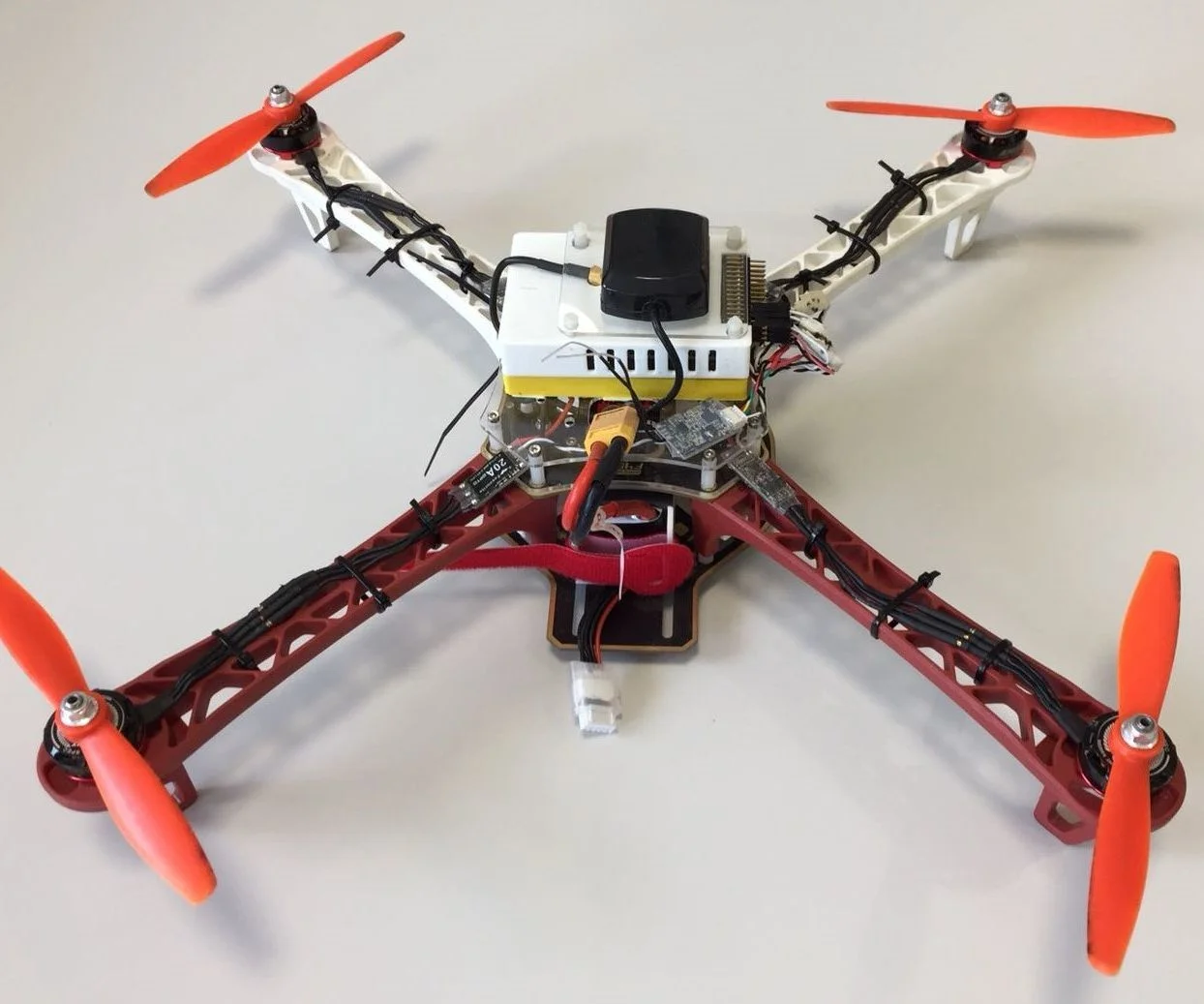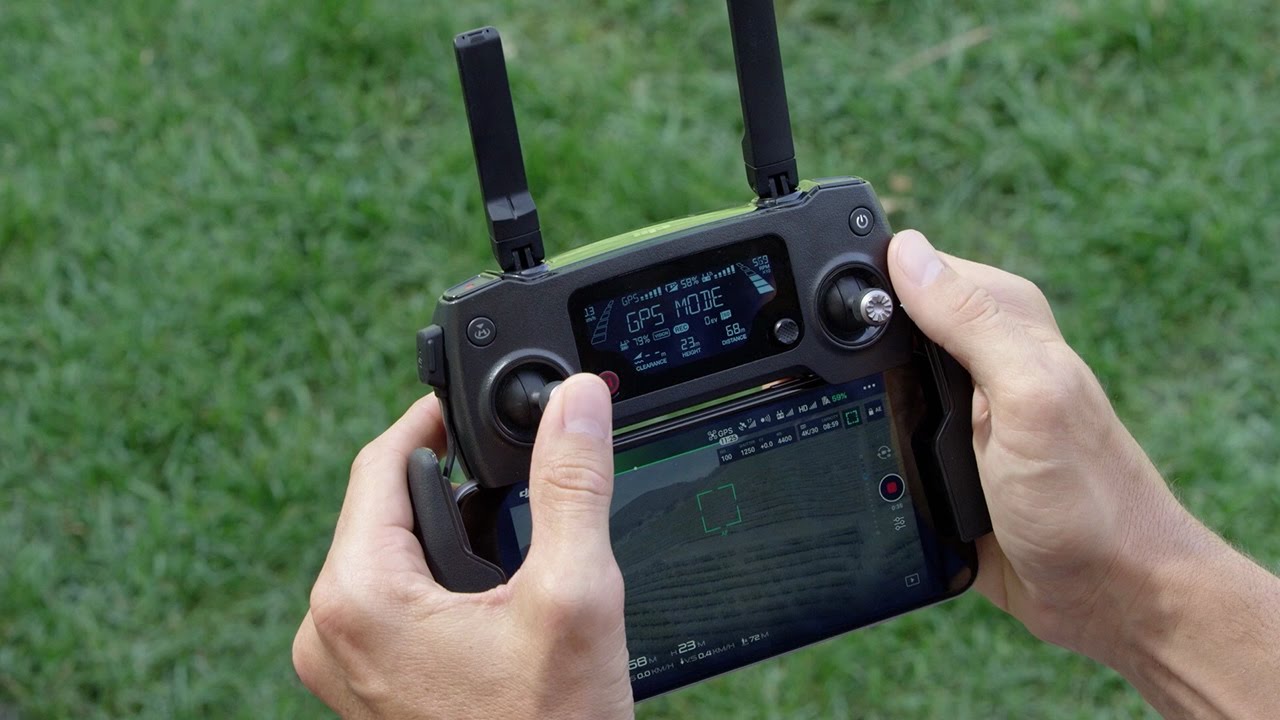Introduction
Welcome to our comprehensive guide on how to program a drone flight path. Drones have revolutionized the way we capture aerial footage, conduct surveys, and deliver packages. However, manually controlling a drone for each flight can be time-consuming and impractical, especially when it comes to repetitive tasks or covering large areas. That’s where drone flight path programming comes in.
By programming a flight path, you can automate the drone’s movement and enable it to follow a predefined route. This allows for precise control, increased efficiency, and the ability to perform complex tasks such as aerial mapping, crop scouting, or search and rescue operations.
However, programming a drone flight path may seem daunting for beginners. That’s why in this guide, we’ll walk you through the process step by step, equipping you with the knowledge and skills to create and execute a successful flight path program.
Whether you’re an enthusiast looking to expand your drone capabilities or a professional in need of automation for specific tasks, this guide will provide you with the essential information to get started. We’ll cover everything from choosing the right drone for your needs to testing and troubleshooting your flight path program. So, let’s dive in and unlock the world of drone flight path programming!
Choosing the Right Drone for Your Flight Path Program
When it comes to programming a flight path for your drone, selecting the right drone for the job is essential. Not all drones are created equal, and different models have varying capabilities and features that can greatly impact the success of your flight path program. Here are some factors to consider when choosing a drone:
- Flight Time: One crucial aspect to consider is the drone’s flight time. The longer the battery life, the more time your drone can be in the air, covering the programmed flight path without interruptions. Look for drones with extended flight times to ensure sufficient coverage.
- Payload Capacity: Depending on your project requirements, you may need a drone with a payload capacity to carry additional equipment, such as cameras, sensors, or even payload delivery mechanisms. Ensure the drone you choose can handle the weight of the required components.
- GPS Accuracy: Precise navigation is essential for a successful flight path program. Look for drones with built-in GPS systems that offer high accuracy positioning. This will help ensure that your drone follows the programmed route accurately, without deviations.
- Obstacle Avoidance: Drones equipped with obstacle avoidance sensors can avoid collisions with obstacles, be it trees, buildings, or other objects. This feature is particularly important if you plan to fly your drone in complex environments or close to objects that could pose a risk.
- Control Range: Consider the control range of the drone, as it determines how far your drone can be from the remote control or the software interface before losing connection. This is crucial, especially if your flight path program requires long-range or extended coverage.
Additionally, it is important to check if the chosen drone is compatible with the flight path programming software you intend to use. Some drones have their proprietary software, while others are compatible with third-party applications. Ensure the drone you choose will seamlessly integrate with the programming software of your choice.
By taking these factors into account, you can select a drone that aligns with your project requirements and enhances the success of your flight path program. Remember to research and compare different drone models, read reviews, and consult with experts or fellow drone enthusiasts to make an informed decision.
Understanding the Basics of Drone Flight Path Programming
Before diving into the actual programming process, it is crucial to have a solid understanding of the basics of drone flight path programming. Here’s a breakdown of the key concepts that you need to know:
- Waypoints: A waypoint is a specific geographical location that the drone will navigate to during its flight. These waypoints are the building blocks of a flight path program and define the route the drone will follow. Waypoints can be coordinates (latitude and longitude) or predefined landmarks.
- Flight Path Variables: Flight path variables allow for greater control and flexibility within your programming. These variables can include altitude, speed, camera settings, and more. By defining specific variables, you can customize the flight path program to meet your project’s requirements.
- Flight Controller Interface: To program a drone flight path, you’ll use a flight controller interface. This interface can be a dedicated flight controller hardware or software that communicates with your drone and allows you to input the necessary flight path commands. The flight controller interface is where you’ll define waypoints, set flight parameters, and execute the flight path program.
- Command Sequencing: When programming a flight path, you’ll need to define the sequence of commands that the drone follows. This includes takeoff, landing, changes in altitude, speed adjustments, and capturing images or video. The proper sequencing of commands ensures a smooth and efficient flight.
- Fallback and Emergency Procedures: It is crucial to account for potential issues or emergencies during the flight path program. Define fallback waypoints and emergency procedures that the drone will follow if it encounters difficulties, such as low battery, signal loss, or unexpected obstacles.
Understanding these basics will provide you with a solid foundation for successful drone flight path programming. Familiarize yourself with the flight controller interface you are using and experiment with simple flight paths to gain confidence in the programming process.
Remember, drone flight path programming is an iterative process. Start with simple programs and gradually introduce more complex maneuvers and actions as you gain experience and confidence. This will help you create efficient and effective flight path programs that meet your project goals.
Setting Up Your Drone Flight Path Program Software
Once you have selected the right drone and familiarized yourself with the basics of drone flight path programming, the next step is to set up the necessary software to create and execute your flight path programs. Here’s a step-by-step guide to help you get started:
- Select the Programming Software: There are several drone flight path programming software options available in the market. Research and choose the software that best fits your needs and is compatible with your drone. Some popular options include DJI Ground Station Pro, Mission Planner, and UgCS.
- Download and Install the Software: Once you have selected the software, download it from the official website or app store. Follow the installation instructions specific to the software and your operating system (Windows, macOS, or Linux).
- Connect Your Drone: Connect your drone to your computer using the provided USB cable or via a wireless connection, depending on your drone model and software requirements. Ensure that your drone is powered on and ready for communication.
- Calibrate Your Drone: Before starting the programming process, it is essential to calibrate your drone’s sensors, including the compass, gyroscope, and accelerometers. This ensures accurate flight path execution. Follow the instructions provided by the software and your drone manufacturer to perform the calibration.
- Launch the Software: Open the drone flight path programming software on your computer. Some software may require you to sign in or create an account before using the program. Follow the prompts and login when necessary.
- Familiarize Yourself with the Interface: Take some time to explore the software interface and understand its various controls, menus, and options. Familiarize yourself with the tools available for creating flight paths, setting waypoints, and configuring flight parameters such as altitude, speed, and camera settings.
- Connect to Your Drone: Once the software is launched and you are familiar with the interface, establish a connection with your drone. This connection allows the software to communicate with your drone, enabling you to send commands and execute flight path programs.
By following these steps, you will be able to set up the necessary software and establish a connection between your drone and the flight path programming software. Once the setup is complete, you’re ready to start creating your custom flight paths and execute them with precision and efficiency.
Creating Waypoints and Path Variables
Now that you have set up your drone flight path program software, it’s time to dive into creating waypoints and path variables. Waypoints are the key locations that the drone will navigate to during its flight, while path variables allow for customization and control over specific flight parameters. Follow these steps to create waypoints and path variables for your flight path program:
- Plan Your Flight Path: Before creating waypoints, plan your flight path on a map or satellite imagery. Determine the specific areas or points of interest that you want the drone to cover. Take into account any obstacles or restricted areas that may require alternative routes.
- Mark Waypoints: Go to the waypoint creation tool in your flight path software and mark the locations you have planned on the map. You can specify waypoints by entering their coordinates (latitude and longitude) or by selecting them directly on the map interface.
- Define Waypoint Properties: For each waypoint, define properties such as altitude, speed, camera settings, and delay time before proceeding to the next waypoint. These properties determine how the drone will behave when it reaches each waypoint, allowing you to capture the desired footage or perform specific tasks.
- Create Path Variables: Path variables provide flexibility and customization options within your flight path program. They allow you to define specific actions or adjustments at different stages of the flight. For example, you can create a path variable to lower the altitude when the drone approaches a specific location or increase the speed for a particular stretch of the flight.
- Assign Path Variables to Waypoints: Once you have created your path variables, assign them to relevant waypoints in your flight path. This ensures that the desired actions or adjustments associated with each path variable are executed as the drone progresses through the flight path.
- Review and Refine: After setting up waypoints and path variables, review your flight path program to ensure accuracy and smooth execution. Make any necessary adjustments or refinements based on factors such as flight time, obstacle avoidance, or specific project requirements.
Remember to save your flight path program for future use and to easily replicate it if needed. With carefully created waypoints and thoughtfully defined path variables, you can now move on to optimizing and refining your drone flight path program for efficiency and precise control.
Optimizing Your Drone Flight Path for Efficiency
After creating waypoints and path variables for your drone flight path program, the next step is to optimize it for efficiency. Optimizing your flight path not only ensures that your drone covers the desired area but also minimizes flight time and conserves battery power. Here are some strategies to optimize your drone flight path:
- Minimize Redundant Movements: Analyze your flight path to identify any redundant movements or unnecessary waypoints. Eliminate any unnecessary back-and-forth movements or circular paths that do not contribute to the desired outcome. Streamlining the flight path reduces flight time and conserves battery life.
- Consider Wind Conditions: Take wind conditions into account when optimizing your flight path. Plan your flight path to leverage tailwinds and minimize exposure to headwinds. This reduces the power needed to overcome wind resistance, allowing for more efficient and longer flights.
- Use Automatic Routing: Some flight path software offers automatic routing algorithms that can optimize the flight path for you. These algorithms consider factors such as obstacle avoidance, shortest distance, or maximum coverage area. Utilize this feature to automate the optimization process and enhance efficiency.
- Optimal Altitude and Speed: Adjust the altitude and speed of your drone based on the desired outcome of the flight path program. Higher altitudes can enable broader coverage, while lower altitudes can enhance detail and resolution. Adjust speed to balance coverage time and data collection requirements.
- Account for Battery Life: Optimize your flight path program to ensure that the drone safely returns to the starting point or designated landing area before the battery reaches critical levels. Use the remaining battery power efficiently to cover the desired area without risking a premature landing or loss of control due to low battery.
- Consider Safety Buffer: Incorporate a safety buffer in your flight path program to account for unexpected obstacles, deviations, or changes in flight conditions. This buffer ensures that the drone has enough margin to adjust its path and avoid collisions or other safety concerns.
Optimizing your flight path program for efficiency not only saves time and resources but also enhances the accuracy and effectiveness of your drone operations. Regularly review and refine your flight path program to adapt to changing project requirements and optimize the use of your drone’s capabilities.
Testing and Debugging Your Drone Flight Path Program
Once you have created and optimized your drone flight path program, it’s crucial to thoroughly test and debug it before deploying it in the field. Testing ensures that your program performs as intended and helps identify any issues or errors that need to be addressed. Here’s a systematic approach to testing and debugging your drone flight path program:
- Simulate the Flight Path: Use the simulation feature available in your flight path software to simulate the drone’s flight according to the programmed path. This allows you to visualize the drone’s movements and verify that it follows the intended trajectory accurately.
- Check Waypoint Placement: Verify that the waypoints are correctly placed on the map or satellite imagery. Ensure they are in the intended locations and properly spaced to avoid collisions or redundant movements. Make adjustments as necessary.
- Run Test Flights: Conduct test flights in a controlled environment to validate the performance of your flight path program. Start with shorter flights to assess the accuracy of the drone’s navigation and the actions associated with each waypoint. Gradually increase the complexity and duration of the test flights.
- Monitor Flight Parameters: During the test flights, closely monitor the flight parameters such as speed, altitude, and camera settings. Ensure that each waypoint is triggering the intended actions and that the drone is following the planned flight path accurately. Make adjustments to the flight parameters if necessary.
- Monitor Battery Consumption: Keep an eye on the battery consumption during the test flights. Verify that the flight path program allows the drone to complete the programmed trajectory and return to the starting point or designated landing area without draining the battery to critical levels. If needed, optimize the flight path to conserve battery power.
- Identify and Resolve Issues: If you encounter any issues such as deviations from the planned flight path, incorrect actions triggered at waypoints, or unexpected behaviors, note these problems and investigate their cause. Debug your flight path program by reviewing the configurations, waypoint properties, and path variable assignments.
- Iterate and Refine: Based on the results of the test flights and debugging process, make the necessary adjustments and refinements to your flight path program. Repeat the testing procedure to validate the changes and ensure that the program now operates smoothly and effectively.
By thoroughly testing and debugging your drone flight path program, you can ensure its reliability and accuracy when deployed for real-world missions. Regularly perform test flights and review the program to identify any potential issues or areas for improvement. This iterative approach will result in a robust and efficient flight path program.
Implementing Autonomous Flight Mode
One of the key benefits of programming a drone flight path is the ability to implement autonomous flight mode. Autonomous flight mode allows the drone to operate independently without the need for continuous manual control. This mode enables the drone to execute the programmed flight path automatically, providing increased efficiency and convenience. Here’s how you can implement autonomous flight mode:
- Select the Autonomous Mode: Within your flight path programming software, choose the autonomous flight mode option. This mode may be referred to as “Auto,” “Mission,” or “Autonomous.” Activate this mode to enable your drone to operate autonomously.
- Upload the Flight Path Program: Once in autonomous mode, upload the previously created flight path program to the drone’s flight controller. This allows the drone to access and execute the programmed flight path without the need for manual intervention.
- Perform Pre-Flight Checks: Before initiating the autonomous flight, perform necessary pre-flight checks. Ensure the drone is properly calibrated, sensors are functioning correctly, and the drone’s battery is sufficiently charged. Additionally, validate that the flight path program has been uploaded successfully.
- Launch the Autonomous Flight: Once all pre-flight checks are complete, initiate the autonomous flight mode. Depending on the flight controller software, this may involve pressing a dedicated button or executing a specific command. The drone will then take off and begin following the programmed flight path automatically.
- Monitor and Supervise: Although the drone is operating autonomously, it is important to actively monitor its progress and ensure that it is following the flight path as intended. Use the flight controller interface or accompanying remote control to keep an eye on the drone’s position, altitude, and other relevant flight parameters.
- Be Prepared to Intervene: While autonomous flight mode is designed for hands-off operation, it is crucial to be prepared to intervene if necessary. Be ready to take manual control in case of emergencies, unexpected obstacles, or deviations from the intended flight path. Stay vigilant and attentive throughout the autonomous flight.
- Complete the Autonomous Flight: Once the drone completes its programmed flight path, it will either return to the starting point or follow a predefined landing procedure. Be mindful of the battery level and ensure that the drone safely lands or initiates its return to the designated landing area to conclude the autonomous flight.
Implementing autonomous flight mode allows you to leverage the power of automation, freeing up your attention and resources for other tasks while the drone operates independently. Always exercise caution, adhere to local regulations, and prioritize safety during autonomous flights.
Safety Precautions and Considerations for Drone Flight Path Programming
When engaging in drone flight path programming, it is crucial to prioritize safety to ensure the well-being of people, property, and the drone itself. Here are some important safety precautions and considerations to keep in mind:
- Know and Follow Local Regulations: Familiarize yourself with the local regulations and laws regarding drone usage and flight. Adhere to any restrictions on flight altitude, flight paths, and areas where drone operations are prohibited. Stay updated on any changes to the regulations applicable to your location.
- Perform Pre-Flight Site Assessments: Before initiating a flight, conduct a thorough assessment of the designated site. Identify potential obstacles, natural or man-made, that could pose risks to the flight path. Take into account factors such as wind conditions, nearby structures, and public spaces where people may be present.
- Ensure Proper Maintenance: Regularly inspect and maintain your drone to ensure its optimal performance. Check for any signs of physical damage, loose parts, or worn-out components. Keep the firmware and software up to date and perform required calibrations to guarantee accurate flight path execution.
- Monitor Battery Life: Always monitor the battery level during flight path programming and execution. Allow sufficient buffer time to ensure the drone can safely return or land before the battery depletes. Plan your flight path within the drone’s operational limits to prevent unexpected power loss during flight.
- Consider Weather Conditions: Be cautious of weather conditions that may impact your drone’s flight and performance. Avoid flying in adverse weather conditions such as strong winds, rain, or snow. Monitor weather forecasts and make educated decisions regarding flight path programming based on the prevailing conditions.
- Communicate with Others: If you are flying your drone in a public area or near other people, communicate your intentions and ensure that bystanders are aware of the drone’s presence. Respect the privacy of others and avoid flying over private property without permission. Stay alert to any potential risks to people and make adjustments to the flight path accordingly.
- Maintain Visual Line of Sight: It is recommended to maintain a visual line of sight with the drone at all times while it is operating autonomously. Keep an eye on the drone’s movements, flight path, and any unexpected changes. This helps you quickly respond to potential hazards and take manual control if needed.
- Have a Contingency Plan: Develop a contingency plan in case of any emergency or unexpected event. Anticipate scenarios such as loss of signal, equipment failure, or encountering unexpected obstacles. Outline procedures to safely recover the drone or execute emergency measures should the need arise.
Remember, safety should always be a top priority when engaging in drone flight path programming. By following these precautions and considerations, you can mitigate risks, ensure responsible drone operation, and contribute to the overall safety of yourself, others, and the environment.
Conclusion
Congratulations! You have now reached the end of our comprehensive guide on how to program a drone flight path. We hope that this guide has provided you with the necessary knowledge and skills to create and execute successful flight path programs with ease and efficiency.
We started by emphasizing the importance of choosing the right drone for your flight path program, considering factors such as flight time, payload capacity, GPS accuracy, obstacle avoidance, and control range. Then, we delved into the key concepts of drone flight path programming, including waypoints, flight path variables, flight controller interfaces, command sequencing, and safety precautions.
We guided you through the process of setting up your drone flight path program software, creating waypoints and path variables, optimizing your flight path for efficiency, testing and debugging your program, implementing autonomous flight mode, and ensuring safety precautions and considerations throughout the process.
Now, armed with this knowledge, it’s time for you to put it into practice. Remember to always abide by local regulations, prioritize safety in all your drone operations, and continue to enhance your skills and understanding of drone flight path programming.
By harnessing the power of programming, you can unlock new possibilities for your drone, automate tasks, capture breathtaking aerial footage, and accomplish complex missions. Whether you’re an enthusiast, a professional in a specific industry, or simply eager to explore the world of drones, flight path programming is a valuable skill that can take your drone operations to new heights.
So go ahead, plan your flight path, program your drone, and soar into the exciting realm of autonomous aerial exploration and mission execution. Happy flying!







